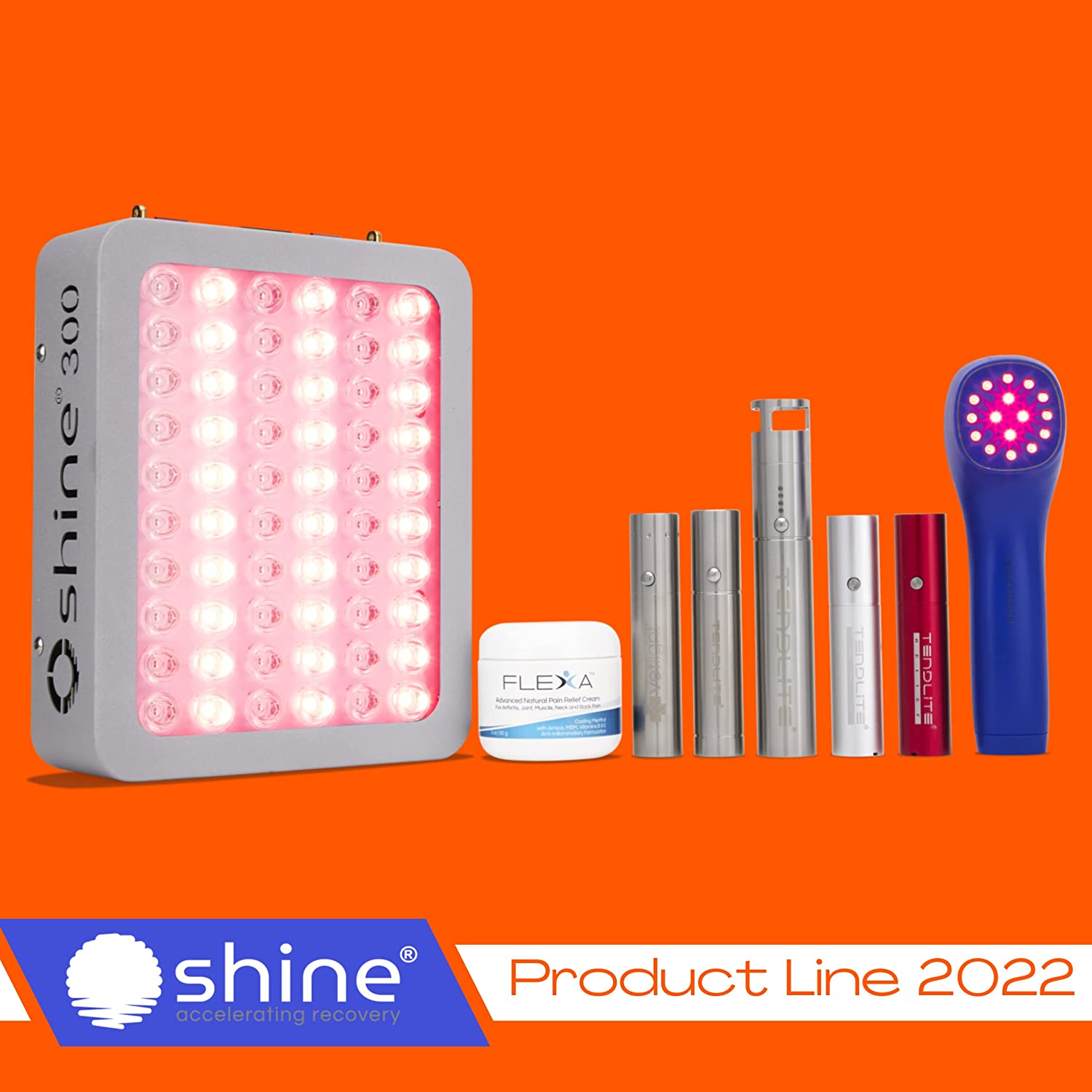The Intricacies of Photobiomodulation Therapy: A Comprehensive Guide
Wiki Article
Unlocking the Possible of Photobiomodulation: A Promising Approach for Restorative Treatment
Are you curious concerning the capacity of photobiomodulation for healing intervention? Envision a scenario where a person experiencing from persistent discomfort locates relief via a non-invasive therapy that utilizes light. This is precisely what photobiomodulation deals. It is a promising approach that takes advantage of the power of light to boost recovery and reduce inflammation in different clinical problems. By targeting details cellular procedures, photobiomodulation has actually revealed possible in increasing injury healing, decreasing pain, and advertising cells regrowth. In this intro, we will certainly discover the devices of activity, applications in medication, and the existing proof sustaining the efficiency of photobiomodulation. Additionally, we will discuss future directions and prospective difficulties in opening its complete potential as a therapeutic intervention.Comprehending Photobiomodulation
To recognize photobiomodulation, you require to grasp the principle of exactly how light therapy can directly influence cellular procedures in your body. Photobiomodulation, likewise called low-level light treatment, is a non-invasive treatment that utilizes specific wavelengths of light to boost biochemical reactions in your cells. When exposed to these light wavelengths, your cells soak up the energy and convert it right into cellular power, understood as adenosine triphosphate (ATP) This increase in ATP production brings about a cascade of mobile reactions, consisting of improved metabolic process, improved blood circulation, and boosted production of collagen and various other healthy proteins.The therapeutic results of photobiomodulation are significant and have actually been studied thoroughly in various clinical fields. It has actually shown appealing cause promoting cells repair work and regrowth, decreasing swelling, soothing pain, and boosting injury healing. Moreover, photobiomodulation has been located to have a positive influence on neurological conditions, such as stressful brain injury and stroke, by promoting neural task and advertising neuroplasticity.
One of the essential benefits of photobiomodulation is its safety profile. Unlike various other treatments, photobiomodulation does not generate any warm or trigger tissue damage. It is a non-invasive and painless procedure that can be done in a professional setting and even in the convenience of your very own home with making use of mobile tools. However, it is very important to keep in mind that photobiomodulation should be administered by trained professionals or according to the producer's directions to make sure ideal outcomes and safety and security.

Devices of Activity
In comprehending the devices of action, you will find how photobiomodulation straight influences cellular procedures with details biochemical responses. When light is put on the body, it is absorbed by chromophores, such as cytochrome c oxidase and flavins, which exist in the mitochondria. This absorption causes a cascade of occasions that eventually result in mobile changes.Photobiomodulation boosts the activity of cytochrome c oxidase, a crucial enzyme in the mitochondria that is included in the electron transport chain. As an outcome, mobile metabolism is boosted, promoting tissue fixing and regeneration.
Moreover, photobiomodulation has been shown to regulate mobile signaling pathways. It triggers numerous development elements and signifying molecules, such as nitric oxide and reactive oxygen varieties, which play essential duties in processes like angiogenesis, inflammation, and cell proliferation. These signaling paths contribute to the therapeutic impacts of photobiomodulation, advertising tissue healing and lowering pain and inflammation.
Applications in Medication
Check out the extensive applications of photobiomodulation in medicine. Photobiomodulation, likewise referred to as low-level light therapy, is a non-invasive therapy that uses light to advertise and boost cellular processes healing. In medicine, this method has actually revealed promising results across various fields.One of the primary applications of photobiomodulation is in pain administration. pbm therapy. It has actually been made use of to reduce both severe and persistent discomfort, including bone and joint conditions, neuropathic pain, and post-operative pain. By targeting the afflicted area with particular wavelengths of light, photobiomodulation can minimize swelling, advertise cells fixing, and provide relief
Additionally, photobiomodulation has shown potential in wound healing. It can speed up the recovery process by improving cell expansion, promoting angiogenesis, and reducing mark cells development. This has considerable effects in the therapy of persistent wounds, such as diabetic abscess and stress sores.
In dermatology, photobiomodulation has been utilized for its regenerative and anti-inflammatory impacts. It can enhance the appearance of scars, lower acne sores, and promote hair development in problems like androgenetic alopecia.
In addition, photobiomodulation has actually shown assurance in neurorehabilitation. It can boost cognitive feature, enhance motor recuperation, and help in the treatment of neurodegenerative conditions like Alzheimer's and Parkinson's.
Professional Evidence and Study Searchings For

In the field of bone and joint conditions, photobiomodulation has actually been located to reduce pain and swelling, improve array of movement, and increase tissue fixing. In addition, photobiomodulation has shown positive results on injury recovery by promoting collagen synthesis, fibroblast, and angiogenesis expansion.
Additionally, research study has actually revealed that photobiomodulation can have neuroregenerative and neuroprotective impacts. It has been found to boost cognitive feature, reduce neuroinflammation, and boost neuronal survival and synaptic plasticity. This has vital effects for the therapy of neurological problems such as Alzheimer's illness, Parkinson's illness, and stroke.
Future Directions and Potential Obstacles
Moving forward, it is Go Here important to take into consideration the potential obstacles and future directions bordering the use of photobiomodulation as a therapeutic intervention. Presently, there is no consensus on the optimum wavelength, intensity, period, and frequency of photobiomodulation therapy.Another vital future view website direction is the growth of portable and cost-effective photobiomodulation gadgets. While current gadgets are effective, they are usually large, pricey, and require specialist supervision - photobiomodulation therapy. The advancement of user-friendly and inexpensive tools would greatly improve accessibility to this treatment, permitting more individuals to profit from its potential restorative results
Additionally, future research study must focus on illuminating the devices underlying photobiomodulation. Despite its growing appeal, the precise devices by which photobiomodulation exerts its restorative results are not totally understood. Understanding these systems would not just boost our knowledge of the treatment yet also aid in the advancement of more targeted and efficient treatments.
Nonetheless, there are likewise prospective difficulties that require to be resolved. photobiomodulation laser. These consist of the demand for standard procedures, the need for properly designed professional trials with larger sample sizes, and the requirement for long-lasting follow-up research studies. Moreover, regulative and security factors to consider have to be taken into consideration to ensure click to read the safe and reliable use of photobiomodulation in medical practice.
Final Thought
In verdict, photobiomodulation holds terrific assurance as a therapeutic intervention in medication. With recurring studies and improvements in this area, photobiomodulation has the possible to unlock new possibilities for enhancing person outcomes.Are you curious regarding the capacity of photobiomodulation for healing treatment? By targeting particular cellular procedures, photobiomodulation has actually revealed possible in increasing wound healing, minimizing discomfort, and advertising cells regrowth.Furthermore, photobiomodulation has actually revealed prospective in injury recovery.Relocating onward, it is vital to consider the potential challenges and future directions surrounding the use of photobiomodulation as a therapeutic intervention. With ongoing studies and developments in this field, photobiomodulation has the potential to unlock new opportunities for boosting patient outcomes.
Report this wiki page